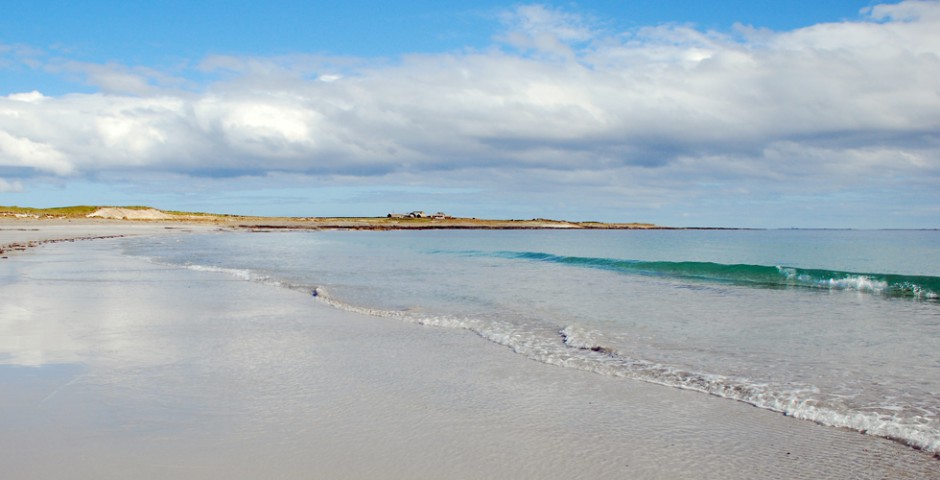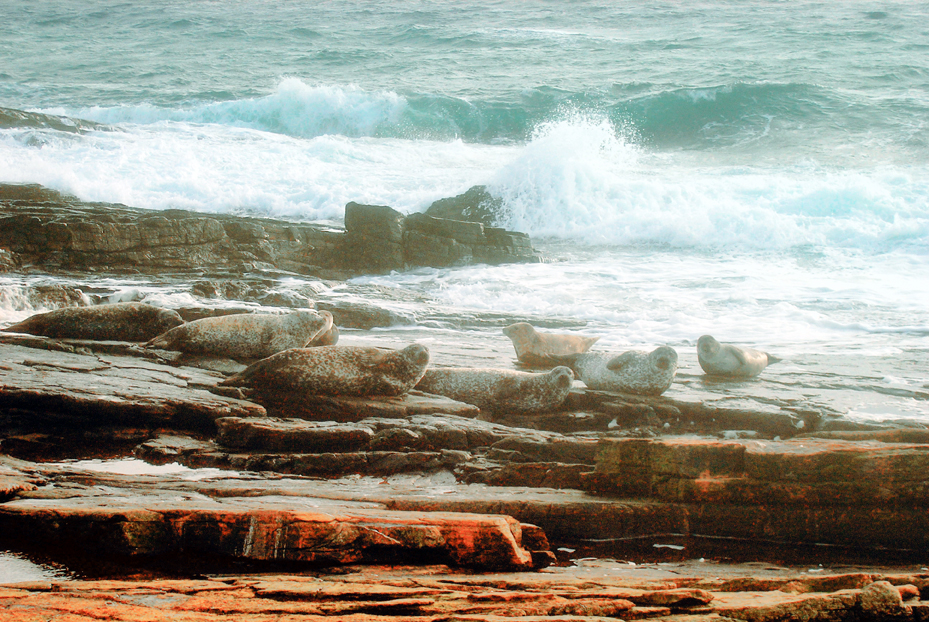For Robert Rendall visiting North Ronaldsay, the sheep dyke was a frontier.
”To pass out through a ‘slap’ into what lay beyond the wall was for me to pass into fabulous realm isolated from all contact with the everyday life of man. True, there are fishing boats in the occasional noust, as at Bride’s Ness; and in the north there is the lighthouse. But all else belongs to the primitive in nature and is exposed to the elementary powers, simple and untamed, of sea and sky, storm and sunshine, life and death. The very sheep, as they thread their way among the rocks, are part of it.”
Robert Rendall had a lifelong love of the shore, becoming an expert in shells and marine life, and he took a particular delight in North Ronaldsay’s rock pools, rich in seaweeds, with the mass of barnacles at extreme low water, and the colours of blue-black mussels with crimson sea anemones and emerald and dark and dark green algae.
The writer Bessie Skea, visiting on a day of summer sun, found a sunny spot among soft warm white sand, to watch the waves come in.
”Papa Westray lay almost due west; to the north, three ships converged and passed, one high and white, one belching black smoke, and all swift of way, for this is a seaway between continents.”
It was an encounter with a passing Norwegian ship that led to the design of the small boat that is so suited to the waters around the island – the North Ronaldsay ‘praam’ of today, used in particular for setting and lifting creels for crab and lobster. The Norwegian vessel carried aboard a small boat that seemed to one islander, Hughie Muir of Sholtisquoy, to have an ideal design for North Ronaldsay.
He was able to go aboard and make some measurements and a sketch, and with no more to go on than this, put the concept to the island joiner who had considerable experience in boatbuilding. They worked together, steaming and shaping boards, and what emerged was a boat that was graceful and highly manoeuvrable, with a greater capacity than existing boats but lighter to row.
Ian Scott, the artist and sculptor who lives at Antabreck, describes some of the experiences of going to the creels, sometimes on autumn days with cold spray and rain lashing in, and sometimes with hail cascading onto the surface of the sea.
”But to compensate for those experiences there were the many other occasions such as, when setting out to fish, returning from a day’s work, or simply making a passage between lines of creels, when the sheer joy of thudding along through choppy blue seas, or any colour of sea, with the salt spray flying, and a face-tingling fresh wind spinning away the wave tops – constituted the very greatest of pleasure.”


